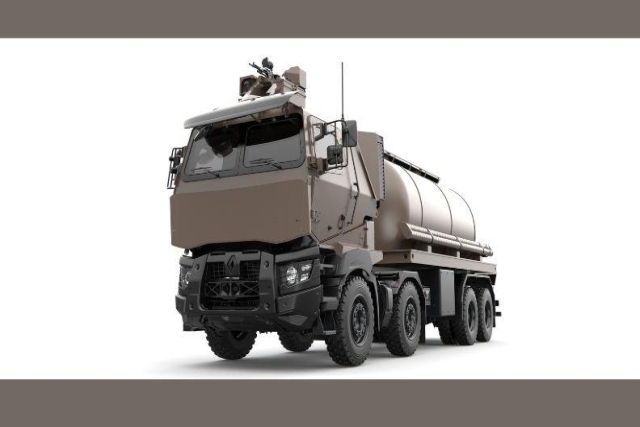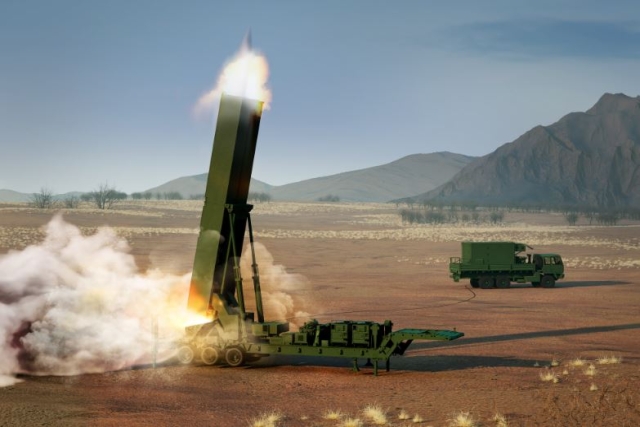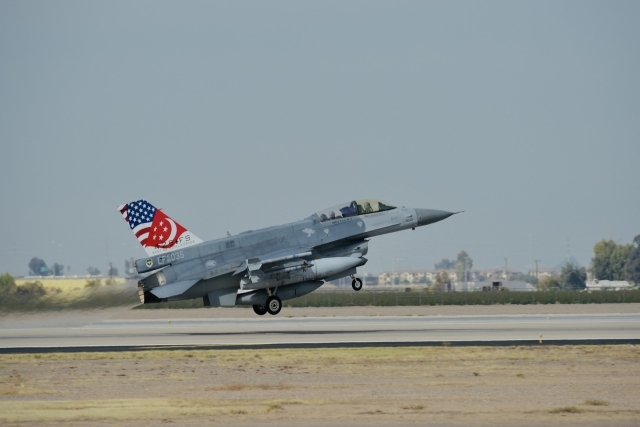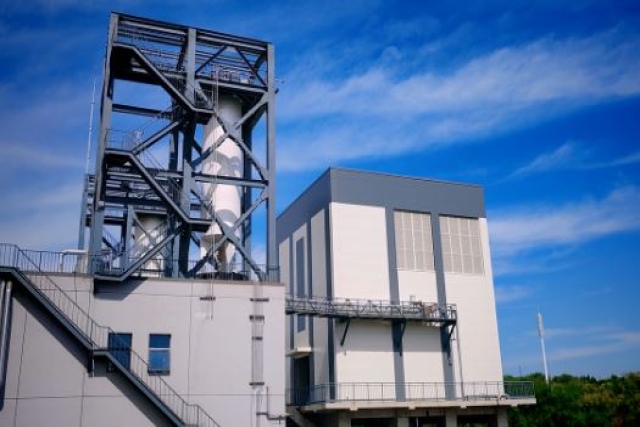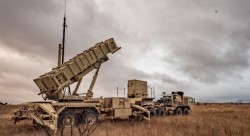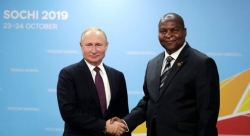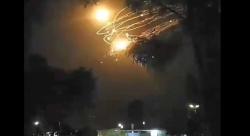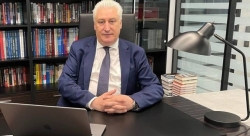Massive air-to-air and air defence missiles modernization of the Indian Air Force

Chief of staff of the Indian Air Force (IAF), Air Chief Marshal P.V. Naik
The Chief of staff of the Indian Air Force (IAF), Air Chief Marshal P.V. Naik, gave an exclusive interview to our print media partner, Vayu Aerospace in which the air chief spoke at length about major procurement and modernization plans including the MMRCA, replacement of old air-to-air and air defence batteries with modern missiles and many others. Excerpts of the interview.
DW : Arguably the most critical and immediate decision concerns the choice of a new fighter type to meet the M-MRCA requirement. We understand that technical evaluation of various types is over and is to be followed by flight trails and operational evaluation, before short listing. What is the time table for this process? Can it be fast tracked? When according to plans should the first M-MRCA enter service with IAF?
Air Chief Marshal P.V. Naik: The Technical Evaluation report is under approval in MoD. The Flight Evaluation of short listed aircraft would commence after approval of the Technical Evaluation report in accordance with Defense Procurement Procedures. A comprehensive trial methodology would be followed for evaluating the short listed aircraft. The entire induction process of the M-MRCA is expected to be completed in the shortest possible time and aircraft are likely to be inducted by 2012-13.
DW : Much of the world, particularly the South Asian region, is going through a turbulent time, with volatile shifts in the geo-political scenario. Please comment on the IAF’s ability to respond to unorthodox challenges? Does the IAF contemplate employment of dedicated attack aircraft in difficult terrain as also unmanned (combat) aerial vehicles?
Air Chief Marshal P.V. Naik: The IAF is alive to the security situation in the country and its turbulent neighborhood. Let me assure you that IAF has been continuously updating its equipment and training methodology to be prepared to respond to any unorthodox challenges. Employment of air power and selection of the appropriate platform/equipment would be dictated by the prevailing situation and our response would be tailored too meet the threat.
DW : At a recent conference on ‘Air Dominance’ issues, Marshal of the Air Force Arjan Singh reminisced that during the 1965 war, the IAF virtually had single radar on the Western Front. Four decades later, how has the IAF closed the gap to detect and identify hostile aircraft and then instantly react to various threats?
Air Chief Marshal P.V. Naik: Prior to 1965, the surveillance capability of IAF was very limited with very few sensors. The complete restricting of AD set up was carried out post-1962 and 1965 wars. Air Defense sectors with dedicated sensors were planned to cover the entire western, south-western, northern and north-eastern borders with high power radars. Presently we have extensive radar cover on western and south-western borders. The IAF plans to have complete coverage of the Indian airspace. Towards this, we are also integrating sensors of the sister services as well as civil aviation.
DW : What is the present situation on replacement of obsolete Soviet-origin surface-to-air missiles (Pechora and Osa-AKMs) with new generation, quick reaction and longer-range missiles? In what time frame can the IAF bring about paradigm change in air defense systems to secure its airbases and other vital assets?
Air Chief Marshal P.V. Naik: IAF is in the process if replacement of Surface-to-air Guided Weapon System (SAGW).Medium Range Surface to Air Missile Systems (MRSAM) are planned to replace the ageing Pechora fleet. These are new generation medium range missile system with better kill envelop, range up to 70 km and elevation coverage up to 18 km. Its induction will commence in the beginning of 2012.Prcurement of Short Range Surface to Air Missile System (SRSAM) is also planned to replace the OSA-AK system. This new generation Low Level Quick Reaction Missile System (LLQRM) would be developed by DRDO jointly with other agencies. This system is currently under development and is likely to be inducted into the service in 2011.By2022, all old SAGW assets would be replaced by state of the art new generation SAGW systems.
DW : A contract was signed with RAC MiG Russia in March 2008 for upgradation of the IAF’s MiG-29 fleet at a cost of $964 million. There are reports about grounding if Russian Air Force Mig-29s: has this affected the IAF’s upgradation process and longer term employment of this type?
Air Chief Marshal P.V. Naik: The grounding of Russian Air Force MiG-29s has not affected IAF’s upgradation process since IAF had addressed the issue as far back as 2002 when the cracks on the fin root, ribs were first noticed. After the recent accidents in Russia, RAC MiG has suggested one time check of fin root tibs using Non Destructive Testing (NDT) methods. The IAF has been carrying out similar checks on the MiG-29 aircraft. The six IAF D&D MiG-29 aircraft are already in Russia for upgradation. As pre the contract RAC MiG is to carry out extensive life extension checks on these aircraft to extend the service life. These checks would be in addition to t he Life extension checks recommended by the OEM.
DW : Operational life of the An-32 medium-lift tactical transport aircraft is being extended for another decade through a process of upgradation in the Ukraine. Considering its residual structural life after its 25 years of service in the IAF what are the plans to identify newer generation aircraft as replacement? Does the joint Indo-Russian MTA program fit in or will the OAF procure more C-130Js?
Air Chief Marshal P.V. Naik: Upgradation is an ongoing process and IAF is planning to upgrade the entire transport fleet to be suitable for operations in modern day environment. A proposal is being processed for joint development of the MTA between India and Russia for use by Russian Air Force and IAF. An inter Government Agreement was signed in 2007. The MTA is a larger aircraft that is not being considered as a replacement for An-32 aircraft. Suitable replacement for AN-32 aircraft would be initiated at on appropriated time based on the Long Tern Perspective Plan of IAF.
DW : Global tender relating to the IAF’s requirement of attack helicopters was cancelled recently. In view of the urgent need to acquire such capabilities, how long would the re-tendering and evaluation/selection process take? At the same time, HAL is developing the Light Combat helicopter (LCH) to meet an IAF requirement given some years back. Will this complement or compete with the attack helicopter import?
Air Chief Marshal P.V. Naik: LCH is a developmental project and these helicopters would be only inducted after the prototype helicopters achieve the Final Operational Clearance. LCH and attack helicopters are in two different classes; therefore, LCH will complement the Attack Helicopter fleet and not compete with it. The RFP for attack helicopters has been issued. Procedures laid down in DPP-2008 would be followed which are very objective, transparent and time bound.
DW : The IAF has committed itself on the NAl-developed Saras small passenger aircraft, to be built by HAL at its Kanpur Division. The recent tragic accident at Bangalore has revealed fundamental design defects. What proactive steps are being considered to overcome problems and make the Saras a successful reality?
Air Chief Marshal P.V. Naik: A joint Court of Inquiry is in progress to ascertain the cause of the accident and identity design defects, if any. Steps to overcome problems in the Saras project could only be initiated after finalization of the Court of Inquiry.
DW : From recent reports, it is seen that further procurement of the Hawk AJT may not come about in view of various technical and logistic difficulties experienced. Is the IAF now looking for a more advanced lead-in fighter trainer for 4th Phase training and thus bring about a qualitative change in its flying training philosophy?
Air Chief Marshal P.V. Naik: The induction of Hawk AJT has already brought a qualitative change in the flying training. IAF has taken up for resolution all technical and logistic difficulties experienced and it is expected that all outstanding issues would be resolved in near future. The scheme to procure additional Hawk AJT is at CNC Stage and we hope that commercial negotiations with BARE/RR will succeed. IAF is in the process of modernizing the trainer aircraft fleet based on our Long Term Perspective Plan and future inductions.
DW : Even as LCA flight trials continue, it is reported that, beyond the LCA, the IAF and ADA are jointly considering an MCA or next generation fighter aircraft. How does this dove tail with the contemplated plan for joint development of a Fifth Generation Fighter Aircraft (FGFA), by a Hal-Sukhoi combine?
Air Chief Marshal P.V. Naik: The induction of new fighter aircraft in the IAF is based on our Long Term Perspective Plan keeping in view the envisaged threat perspective. Towards this, the indigenous Light Combat Aircraft (LCA) is nearing its development and would be inducted soon. An inter Government Agreement has been signed with the Russians for co-development and co-production of an FGFA. ADA is desirous of utilizing the knowledge and expertise gained in the process of manufacturing LCA to develop a next generation Medium Combat Aircraft. ADA has prepared a concept paper for development of a next generation Medium Combat Aircraft. The IAF is willing to provide full cooperation to all indigenous aircraft development programmes.
DW : Following the November 2008 terrorist attack in Mumbai, there was vehement demand by political parties and sections of the public for ‘surgical air strikes’ by the IAF across the border to target terrorist training establishments. Such public outcry may yet recur in the future. What manner of graduated response can the Indian public expect?
Air Chief Marshal P.V. Naik: Our response to this would be based on directions received from MoD. I can assure you that IAF is aware of the security situation and is fully capable to respond to all contingencies, should the need arise.
DW : The IAF has also been seeking heavy lift transport aircraft and heavy lift rotorcraft to augment its limited number of Ilyushin Il-76s and Mi-26s. When is selection process for the new type to be completed?
Air Chief Marshal P.V. Naik: IAF plans to induct Heavy Lift Transport Aircraft and Heavy Lift Helicopters from 2013 onwards as per our Long Term Perspective Plan. A case to procure there aircraft has already been initiated and it is envisaged that the selection and procurement process would be competed as per our plan.
DW : Re-equipment of existing (and number-plated) fighter squadrons with HAL delivered Sukhoi Su-30MKIs continues, but we understand that there are certain cost escalation issues to be resolved on additional aircraft ordered. How will this impact on projected time and force-levels?
Air Chief Marshal P.V. Naik: There is the Government of India-approved annual escalation factor to be considered for procurements from HAL. All procurements from HAL, including Su-30MKI are negotiated on the basis of government approved escalation factor. There is no delay in delivery timelines and al Su-30MKI aircraft would be delivered as planned.

